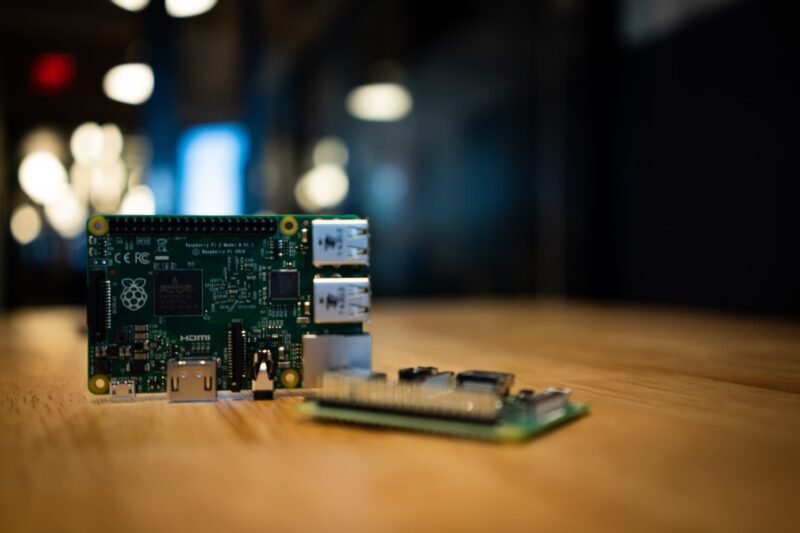The race to scale 5G is on as the telecommunications industry works to build a foundation for the technology. It’s not without its challenges, including the cost to build, the relative lack of consumer demand, and the current 4G infrastructure.
5G is a necessary component of Industry 4.0, especially in telecommunications. With its impact on IoT ecosystems and centralized cloud-based data centers, we can expect 5G to be part of the equation for a smart future.
It’s not enough on its own, however. Cloud computing and data processing in IoT ecosystems needs more than just 5G. With the latency of data transfers from the devices to the network core, many of IoT and 5G’s most promising use cases offset the benefits of 5G against the inherent problems with centralized cloud storage. No matter how fast or far data can travel with 5G, it’s still vulnerable to security breaches and performance problems that can impact the experience for the end user.
Fortunately, there is a solution. Edge computing using single-board computers (SBCs), such as the NXP i.MX 8, brings the best of multiple technologies together to overcome current limitations and create a more promising future.
Limitations of Cloud-Based Data Storage Centers
Cloud computing was a game-changer for many industries. When introduced, cloud computing allowed businesses to collect and store massive amounts of data and support remote and hybrid workforces with real-time collaboration and productivity tools. Enterprises could scale as needed, and data stored in the cloud proved just as secure – if not more so – than physical documents.
Cloud-based data storage also allowed for the adoption of IoT devices. As more and more data was needed for IoT devices, centralized cloud-based data centers offered the space, security, and scalability necessary for enterprises to collect, store, process, and analyze data as needed. Updates could occur remotely, allowing enterprises to rely on cloud vendors instead of in-house IT teams.
Despite these advantages, cloud-based storage has some downsides. With many IoT devices on the edge of the network, data must be sent across long distances to the network core to be processed and analyzed. Then, it must be sent back to the network edge to provide insights.
This delay has significant impact on mission-critical functions in the best of conditions. At worst, data can get clogged up on a high-traffic network or suffer latency that renders the information useless.
For an IoT device that relies on split-second decisions, such as an autonomous car or monitored industrial equipment, the delay negates any benefits that cloud computing provides.
Data is also vulnerable in transit. The longer the distance traveled, the more susceptible to hacking or data breaches. Data already needs end-to-end protection from a breach, and the transmission provides another opportunity for bad actors to access it.
Constant transfers of large amounts of data also add to the maintenance and transfer costs and create stress on the system.
Edge Computing with Single-Board Computers
With IoT, everything takes place at the network’s edge. IoT device sensors collect information, which may be a simple sensor or a complex device that takes in data from multiple sources. Edge computing keeps the data processing and analytics at the network’s edge, closer to the device or the end user who needs the information.
There are many benefits to keeping data processing at the edge, including:
- Faster processing with minimal latency that comes from sending data back and forth from the cloud-based core
- Reduced expense, since an expensive medium like cellular isn’t needed for data transmissions
- High security, since data is contained within the edge device
- Rapid, real-time insights for faster decision-making, a vital component of AI-enabled devices
Single-board computers (SBCs) are the best option for IoT device edge computing. These platforms offer high-speed memory, high-volume storage, enhanced security, and multiple operating systems for customizable configurations.
Along with direct benefits of edge processing, SBCs have flexibility in configuration and scalability. As long as the minimum requirements are met, SBCs can be expanded and reconfigured without a full overhaul. PCs are typically built for a task and lack this flexibility.
SBCs are fully functional computers, but they’re built on an individual circuit board. They contain all the components of a functional computer, including a microprocessor and input/output. These boards are configurable and offer a range of processor varieties, from ARM processors to processors from traditional PCs. The result is a low-power computing solution, perfect for edge computing.
Because of the flexibility, building an SBC is a hands-on process. Designers and engineers learn about the system and network as its built, which is beneficial as more SBCs and components are needed to address greater data needs in the future.
As beneficial as an SBC can be, there’s a limit to what one board can do. SBCs can scale to clusters, however, which act as micro supercomputers. Depending on the number of nodes, an SBC cluster can support multiple terabytes of mass storage and gigabytes of memory for mass storage and high performance, but only takes up a few feet of space. SBC clusters can also consist of off-the-shelf or DIY built SBCs.
5G and Edge Computing
5G has many benefits beyond performance, including the potential to implement virtual networks and connect larger networks of connected devices in IoT ecosystems.
It can’t do it alone, however. 5G needs edge computing to reach its full potential. Without the capabilities of edge computing, 5G is still sending data to the cloud core for storage and processing, offsetting the performance benefits that make 5G beneficial in the first place.
To reach its full capability, 5G needs to be combined with edge computing. With both, data can be processed on the edge with minimal latency, closer to the end user, for rapid data-driven insights.
As IoT devices, like the NXP i.MX 6 single board computers, use cases become more complex, data processing demands will increase. If IoT will reach widespread adoption, processing will need to be done at the network’s edge.
Artificial intelligence (AI) is another significant driver for edge computing with 5G. AI-enabled IoT devices need increased data processing and analytics capabilities to filter through massive amounts of data quickly and provide responses to end users or devices. By staying close to the network edge, data can be processed much faster, and only vital data needs to be sent back to the network core. The overall result is not just improved performance but reduced network congestion.
Edge Computing as a Driver for 5G Adoption
5G is gaining attention for its applications in IoT. The technology expands on 4G capabilities with over 100 times the speed and operates on multiple spectrums to increase both range and performance. Unlike 4G, which is restricted by performance impacts like network traffic and latency, 5G allows for better service and more wireless devices.
As mentioned, 5G’s benefits are outweighed by data transmission to the cloud network core. Edge computing bridges the gap by enhancing 5G to bring the data processing and analytics to the network’s edge, allowing high volumes of data to be processed and analyzed for lightning-quick responses. This also reduces costs, since data only has to move short distances over a potentially expensive medium like cellular, rather than to the network core.
In addition, the combination of edge computing and 5G improves the performance of IoT applications and provides a better, more immersive customer experience. The data needed for applications is close to the end user, and only complex, mission-critical data needs to travel to the cloud storage center.
5G adoption is slow at this point, creating limitations for its use in industrial IoT applications. Until broad rollout occurs, not all applications and use cases will be available at once and 5G may be stuck in random, limited applications.
As a result, there’s less demand to increase 5G coverage and fewer devices equipped with 5G capabilities. If there’s not enough coverage, there’s not enough adoption, and without adoption, there’s less incentive for 5G investment and development.
Even with the inferior 4G, edge computing can bring attention to the capabilities of 5G on the edge. The combination can be just enough for 5G to adopt once it’s developed, overcoming limitations in 5G coverage. While it won’t come close to the capabilities, cost-effectiveness, and performance of 5G, it can fuel the demand for 5G services for applications like AR/VR, gaming, and manufacturing.
Bringing It All Together
While we can consider all the benefits of each of these options individually, it’s really together that 5G with edge computing and SBCs can shine.
SBCs solve issues with space, costs, and computational power to provide mass storage, security, memory, and configurability for IoT ecosystems and devices operating on the edge. This addresses the challenges of latency, vulnerability, costs, and performance with mass data transmission and processing. Finally, there’s 5G, which uses both low and high bands to deliver rapid data transmissions over long distance without increasing network congestion.
By complementing each other’s strengths and weaknesses, 5G edging computing powered by SBCs play a vital role in shaping the future of the telecommunications industry.
Author Bio:
Jason is the Head of SEM at SolidRun which is a global leading developer of embedded systems and network solutions, focused on a wide range of energy-efficient, powerful and flexible products which help OEMs around the world simplify application development while overcoming deployment challenges
Read Dive is a leading technology blog focusing on different domains like Blockchain, AI, Chatbot, Fintech, Health Tech, Software Development and Testing. For guest blogging, please feel free to contact at readdive@gmail.com.





